Ray-esque | Satyajit Ray: Interesting Anecdotes
Ray-esque | Satyajit Ray: Interesting Anecdotes
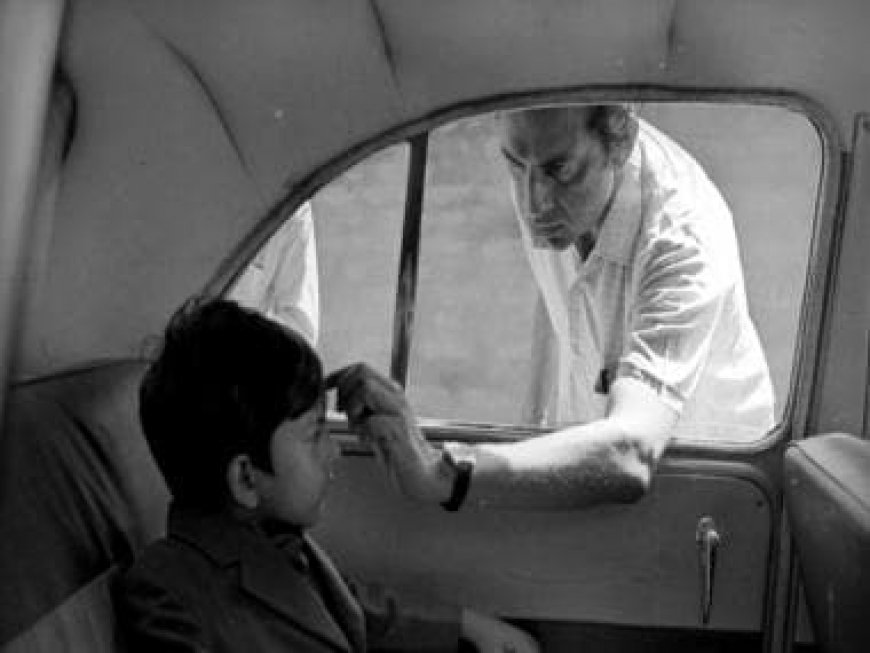
Satyajit Ray’s close to four-decade film life is strewn with captivating anecdotes. The first that comes to mind is the master’s working with Tulshi Chakraborty. Chakraborty, in fact, starred in Ray’s first film itself, Pather Panchali.
“Father loved working with Tulshibabu. He was such an unalloyed, simple and down-to-earth human being. In the same breath, he was fabulously talented. His performances even in the worst of Bengali films were marvellous,” exudes Sandip. In the wake of the indifferent showing of Aparajito at the box-office, Satyajit Ray decided on the apparently musical film, Jashaghar (The Music Room). But, the shooting of Jalshaghar was stalled in between because Chabbi Biswas had to leave for the screening of Tapan Sinha’s Kabulliwallah, in which he had also performed, in Berlin. In the slightly longish gap that followed, Ray decided to turn Parasuram’s Paras Pathar (The Philosopher’s Stone) into a film. Tulshi Chakraborty was cast as the protagonist in this movie. Paras Pathar was meant to be a quickie.
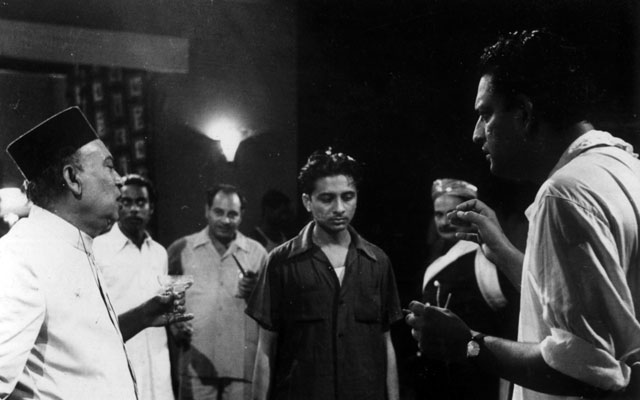
“Father had read the short story quite some time ago and after scripting the film, he was convinced that it was tailor made for Tulshi Chakraborty. After browsing through the screenplay, Tulshibabu was on Cloud Nine. He was elated. Father’s screenplay deviated quite a bit from the original writing. This is because my father had converted a short story into a full-fledged film. But, that didn’t prevent Parasuram, Paras Pathar’s author, from being joyous watching the cinematic transcreation of his writing. He expressed to Ray that he had never imagined that the maestro would reel out such a film from his short story. ‘You have brought off a great job’, he told father,” expresses Sandip.
Sandip informs: “Father felt it was a sheer delight to work with Tulshi Chakraborty. The cocktail party sequence is still crystal clear in my memory. Father had contracted an eye infection when the shooting was on. So, he was wearing dark glasses. Even the production photographs of that time find him wearing dark glasses. Father had ordered the costumes and a prince-coat for Tulshibabu for the cocktail sequence. Going by the manner in which he scheduled his scenes and did his homework, everyone knew in advance about this sequence and other scenes.”
But, Tulshi Chakraborty was unaware of his dress for the cocktail party. When he entered the make-up room and saw that instead of his customary dhoti and half-shirt, which he wore in many a film earlier, a prince-coat was slung around a hanger. The cream of Tollygunge had performed in the cocktail party sequence from Chhabi Bisawas to Pahari Sanyal and Chandrabati Devi to Renuka Ray. The complete galaxy. So, Tulshi Chakraborty had initially concluded that the prince-coat was meant for one of the top stars. But, when he was finally made to wear it, he broke into tears.
“On being informed of this incident, father rushed to the make-up room perturbed and found Tulshi Chakraborty crying. Tulshibabu affectionately clasped father’s hands and said it was an unprecedented incident in his life. This moving and memorable experience was never to be erased from my father’s mind. It had never occurred in his life,” emotes Sandip. “He couldn’t shoot for a while during the film after that episode. He hadn’t imagined that someone so gifted, yet self-effacing like Tulshi Chakraborty could be part of the film industry.”
“Everytime we spoke about Tulshi Chakraborty later, father would narrate this moment. When one works with an actor throughout a film, you get to familiarise yourself very closely with him as a human being. His attitudes and his behavioral approach. Unfortunately, when people dropped by to interview father, they didn’t talk about Paras Pathar much. They dwelt more naturally on the likes of the Apu Trilogy or Charulata. Paras Pathar was considered a lesser film. In fact, it also didn’t impress at the box-office,” Sandip says. “But, when there was a revival of the film in Calcutta in the eighties, everyone was floored by the film. This has been seen in many of father’s films whether it be Jalshaghar or Kanchengungha which were ahead of their time.”
In early-2000, a complete retrospective of father’s films, including shorts, was fielded in France’s Nantes city at various theatres. Sandip and his wife, Lolita, were present at the retro. “It was a phenomenal success. And, Jalshaghar ran to packed theatres. Then, there was another screening of Agantuk (The Stranger) at the Provence festival in France after father passed away. We were there along with writers Sunil Gangopadhyay and Amitav Ghosh and photographer Marc Riboud and Krishna Riboud together with others.
“After Provence, we travelled to Paris. I was looking around for good films on VHS because the early nineties was the age of VHS. Someone advised me to visit a store which offered interesting films. On reaching the store, I was looking around. Suddenly, I stumbled upon an entire rack in a shelf stacked with father’s films. I was immensely moved. This proved the popularity of father’s movies in France,” elates Sandip.
“Another facet which people found difficult fathoming is father’s equation with children. He used to climb down to their level and enter into an adda (chat) session. He became their friend and never allowed them to sense that difference in years. He made them feel that they could pose any question to him. During Sonar Kella (The Golden Fortress), we scoured Rajasthan in the car or bus. Kushal (Chakraborty), the child artiste, then seven or eight years old, used to sit beside father and ask various questions. And, father would respond to every question of his. The children always gave their best for their father. Very few directors have handled children as efficiently as father,” Sandip exudes. Kushal expressed later when he had grown in years, that he realised to what extent he had troubled the master in the midst of all his work. “That was father’s magic. Of making a child easy and confident of facing the camera and bringing off their act,” Sandip adds.

There were no air conditioned studios in Calcutta when Satyajit Ray or other directors were at work. So, shooting would take its toll at the end of the day on the director and other crew members . “In such situations, father would pack up for the day and begin with renewed vigour the next morning,” says Sandip.
He also mentions the incident when the unforgettable actor Rabi Ghosh had goofed up on his act on the first day’s shooting in Jana Aranya (The Middleman), then realised he had messed up and, in turn, bounced back with a stellar performance. In fact, Rabi Ghosh had confessed to this writer in the middle of an interview that Jana Aranya’s Natabar Mitter was his most favourite and challenging role. “I have personally never faced any obstacles while directing Rabi Ghosh,” underscores Sandip.
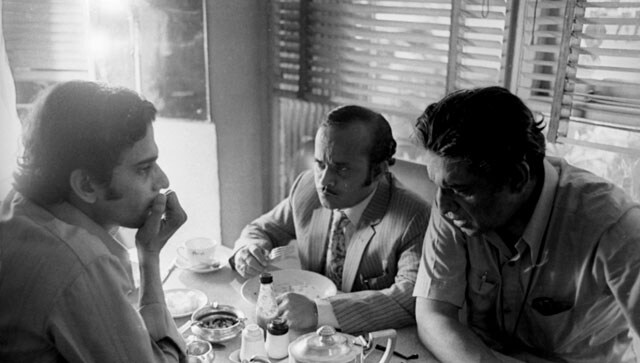
Incidentally, at the same time, professional actors would sometimes improvise while delivering their roles with Satyajit Ray. “Father allowed that liberty to his performers. Unless something was outrageous. Then, he used to cut shots or juggle with them on the editing table. He would never keep his film scripts water-tight or detailed. Rabi Ghosh was also a rare actor who could act and, in step, effectively and render dialogues when he was eating in a particular scene. Most actors would either perform or eat. But, doing both the activities simultaneously was a gift. Rabi Ghosh was a master in this realm of acting. There’s none like him till date,” remarks Sandip conclusively.
“Off hand, I can remember a scene of this nature in Abhijan. But, the most memorable sequences of eating, delivering dialogues and performing are in Goopy Gyne Bagha Byne (The Adventures of Goopy and Bagha). But, it goes to Tapen Chattejee’s credit that he went all out to come up with an acting performance which complemented Rabi Ghosh’s. This is because Rabi Ghosh was a scene stealer. He could completely overshadow his co-actor,” says Sandip with clear stress.
Sandip also talks of Dhritiman Chatterjee in Pratidwandi. “He,” Sandip exclaims, “was fantastic. He was a ‘one-take’ artiste throughout the film. In fact, father told him that he should go for a second ‘safety take’ in case a technical problem happened to crop up later. Father would prefer to stick to just two ‘takes’ at the most in case it was an efficient performance. In fact, none other than master actor Sir Richard Attenborough was befuddled by father’s shooting style,” reveals Sandip. It was famously aired, in fact, that the maestro would edit a film through the camera while shooting it. He hated any flab to creep in.
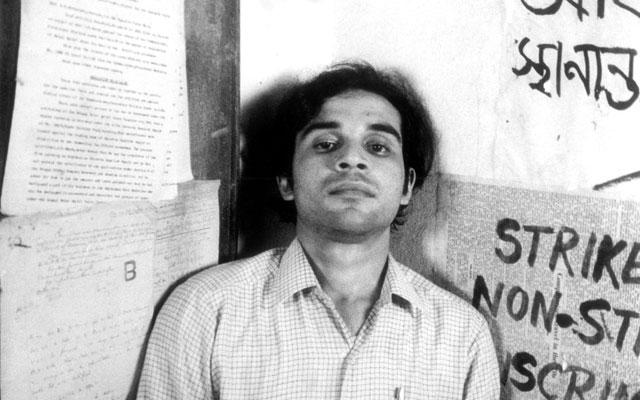
“The shot division in the script, the storyboarding, itself meant that the initial editing work had been finished. The way he planned his film would leave very little work for a professional editor in case, hypothetically speaking, father chose to be absent during editing. But, that naturally never happened. Consequently, a whole range of variations used to be carried out during editing. His approach to editing was an eye opener. Shots and scenes were often dropped and switched around. This would occur in all his films, but was seen in a pronounced manner in Goopy Gyne Bagha Byne and Aranyer Din Ratri (Days and Nights in the Forest). Finally, the movie assumed a different face,” says Sandip with bemusement.
Satyajit Ray was constantly improvising while directing, according to Sandip. He was never rigid. “There was a constant flow of ideas in my father’s mind,” airs Sandip with emphasis. In the sequence in Shatranj Ke Khilari, where Captain Weston (Tom Alter) accompanies General Outram (Sir Richard Attenborough) to confront Wajid Ali Shah (Amjad Khan) and convey to him in Urdu that he must abdicate his throne and power, the maestro came up with a poignant scene. Weston is led by his general to pass on this message to Wajid. But, Weston loves Wajid for his creativity and feels a tremendous compunction communicating the Raj’s orders to Wajid. Tom Alter was asked by Satyajit Ray to reflect this feeling of guilt and sadness while conveying Outram’s words to Wajid. Tom hadn’t got his act right the first time around. Ray called Tom Alter over and told him: “All you have to do, Tom, is to look down and look up while rendering your dialogue. That’s all. The job is done.” Satyajit Ray was in the habit of bringing off the best of acting performances with the briefest of touches.
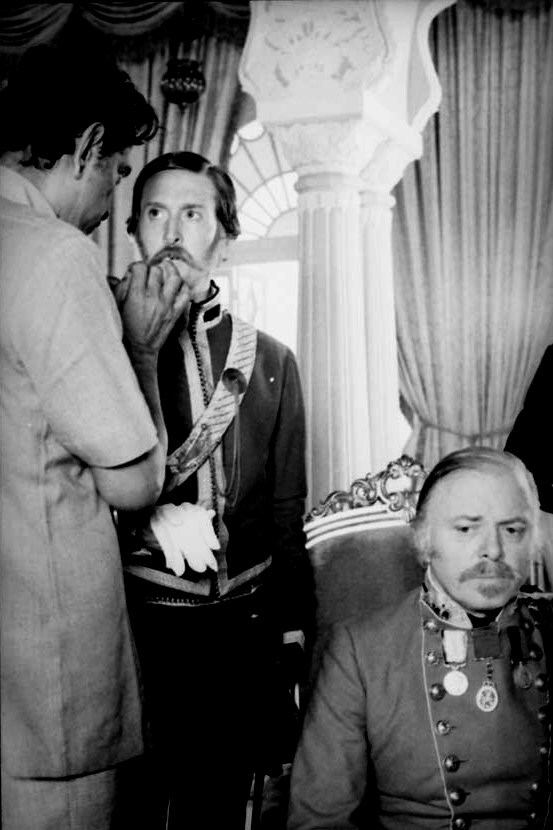
“Father would continuously fine-tune the script. And, that often occurred during shooting. And, this explains why he relished shooting and being actively present in all the departments of filmmaking. Primarily because his films would undergo varied changes till the finish. The luncheon sequence in Hirak Rajar Deshe (Kingdom of Diamonds) between Goopy and Bagha before they meet Udayan Pandit (played by Soumitra Chatterjee) was first shot in North Bengal. Subsequently, it was retaken in Jaichandi Pahar (Jaichandi Hills) in Purulia. Father found the second location so striking that he did away with the North Bengal shooting on the edit table,” says Sandip, exemplifying another instance of improvisation of a different nature by his father.
Changes in location cropped up on several occasions in Ashani Sanket (Distant Thunder). “For example, we had homed in on a location and locked it in a particular season and went back to shoot in another season and found the environment in the location to have undergone a complete change. Finding the location ‘visually dead’, according to my father, we had shifted to another locale. But, since father’s shooting film ratio was extremely closely monitored by him, he didn’t run into a problem on that front if it came to a reshooting,” pronounces Sandip with emphasis. It was Ray’s supreme deftness at work again.
Ashoke Nag is a veteran writer on art and culture with a special interest in legendary filmmaker Satyajit Ray.
All images from Satyajit Ray Society.
Read all the Latest News, Trending News, Cricket News, Bollywood News, India News and Entertainment News here. Follow us on Facebook, Twitter and Instagram.
What's Your Reaction?


























































